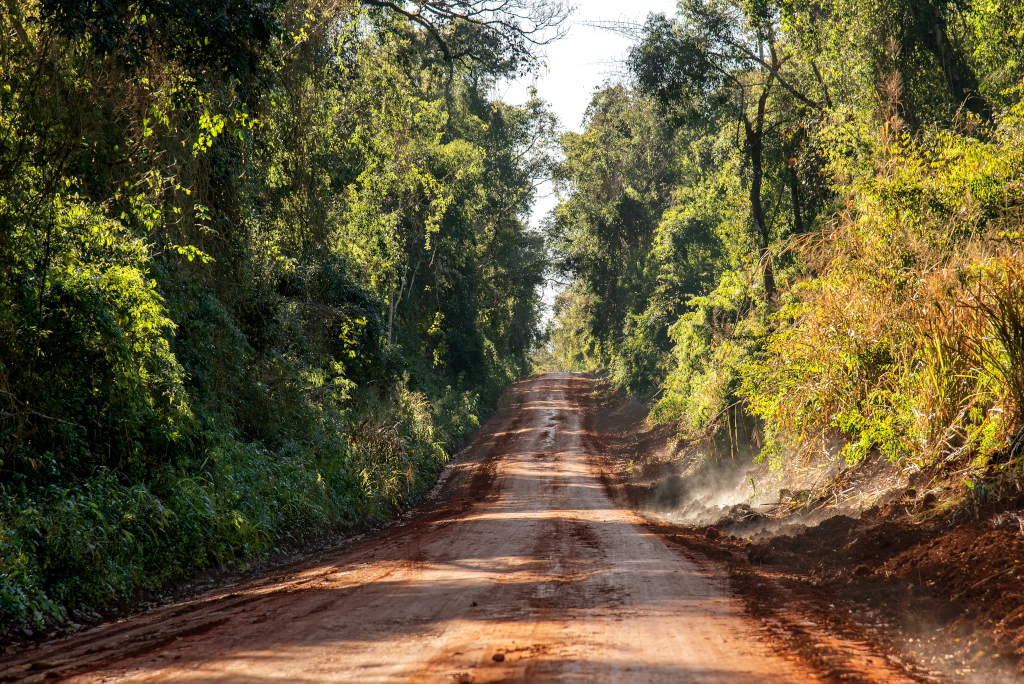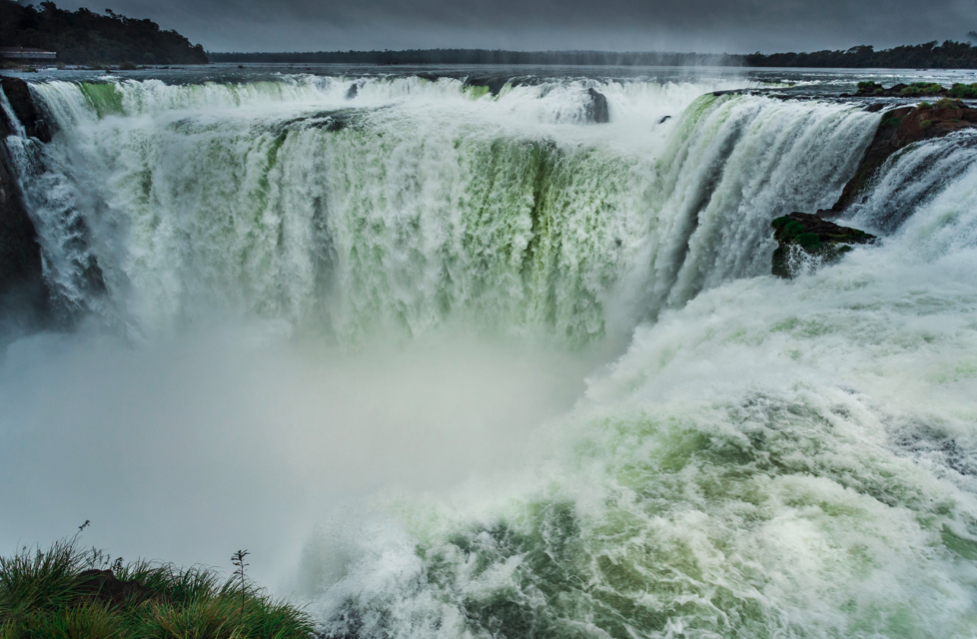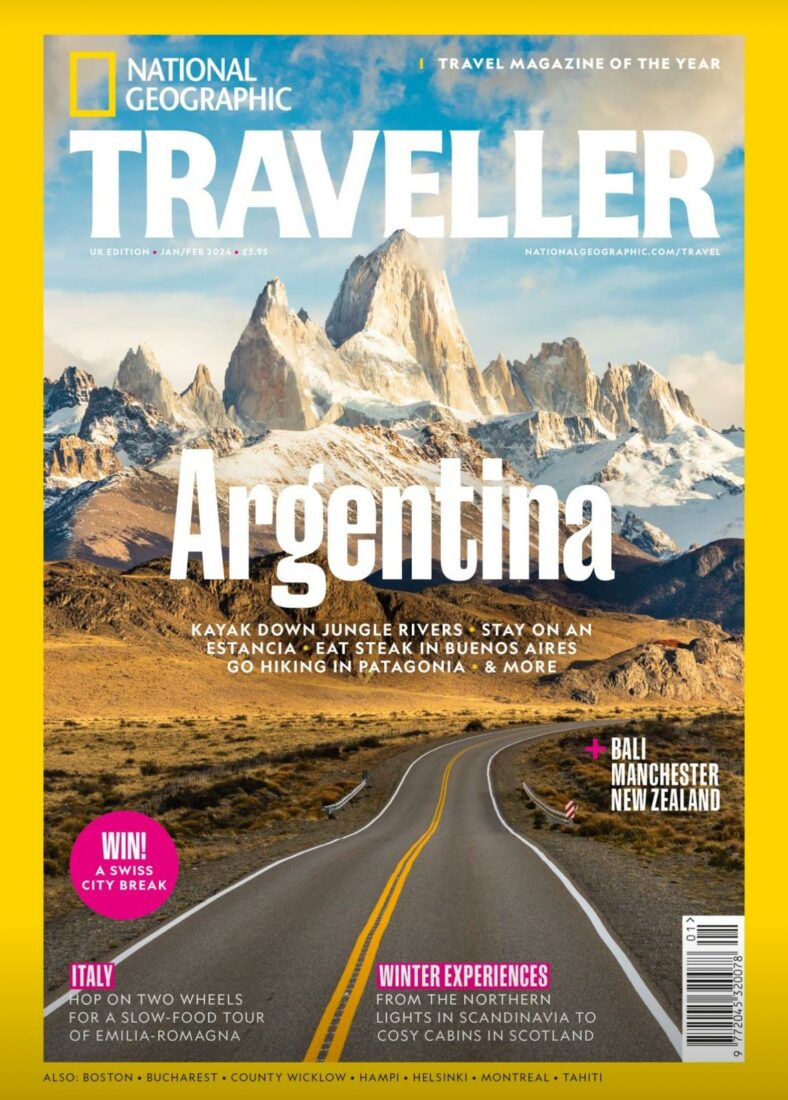To welcome 2024, National Geographic Traveller (UK) published a special edition on Argentina including a feature on Awasi Iguazu by Sarah Marshall.
“Visitors to Iguazú Falls often overlook the wild Misiones region surrounding it,” writes Marshall, “but one lodge working with the area’s Indigenous Guarani people is hoping to change that”

An aerial view of the Atlantic Rainforest
Awasi Iguazu, our 14-villa Relais & Chateaux lodge, is surrounded by primary rainforest.
“Thumping with a million mini heartbeats, the jungle never sleeps” writes Sarah Marshall in the nature-focussed publication. “Insects hum, monkeys squeal and birds trill to create a rapturous symphony. But in the humid equatorial rainforests, almost everyone needs a rest by midday.”
That’s where our jungle plunge pools come into their own.

Each of the 14 villas at Awasi Iguazu has a private plunge pool
The article points out that the Iguazú Falls, a UNESCO World Heritage site, is popular for tourists, with almost three million people visiting the falls in 2022.
A highlight for Marshall was exploring the Misiones province on the Argentinian side of the Iguazú Falls, this is something we have been developing for many years at Awasi with our range of excursions carried out with private guides.

Kayaking at Awasi Iguazu
“Drifting silently along the terracotta waters of the Yacu-I River, I allow the current to carry me downstream,” writes Marshall. “It’s one of hundreds of rivers, streams and creeks eventually making their way to the mighty Iguazú Falls, just over 60 miles away from where I’m kayaking.
The article explains how in Misiones “only around 6% of the original Atlantic rainforest that once covered the region remains.”

Exploring the area around Iguazu with your Awasi private guide. The open road can feed the imagination.
“Awasi, which operates a 14-villa lodge on the edge of Iguazú National Park, believes one of the best ways to protect that precious pocket of biodiversity is by showing people what’s there.”
Our private excursions are carried in a low-impact and respectful way, supporting local communities and protecting pristine areas of natural beauty.

Lunchtime service at our Relais & Chateaux restaurant at Awasi Iguazu, Argentina
Lunch is taken out in the wilderness, or in the Relais & Chateaux restaurant at Awasi Iguazu.
“While I kayaked, my companions Chito Victor Dos Santos and Nona Silveira De Asis had prepared an asado barbecue of sizzling meats with mbeju — a type of pancake made with cassava flour, stuffed with cheese.”
As the article says, “Nobody understands this forest better than the Indigenous Guarani, who have moved across vast areas spanning Brazil, Paraguay, Bolivia and Argentina for hundreds of years.”

Mbya Guarani Community – their ancient culture, language and art strongly influence everyday life in Misiones.
Marshall visited one of the four communities neighbouring the Awasi lodge, and enjoyed being shown round by local guide, Karaí José.
“Seeking shade from the sun, several children play outside mudbrick houses, while their parents tend to plantations of corn, sweet potatoes and cassava” she recalls.
“But we never touch rosewood and we don’t hunt certain animals during the mating season,” insists Karaí.
Reciprocity and sustainability runs deep in the Guarani culture.
“According to a legend, the forest goblin Pombero will terrorise anyone chopping down trees they don’t need.”

Devil’s Throat, Iguazu Falls, Argentina. Photo by Luciano Bacchi
As well as exploring the wider Misiones Province, Marshall visited the Iguazú Falls with her Awasi private guide, Josefina Stocca.
Entering the national park at 8am, before any crowds arrive, she was rewarded with this epic natural sight.
“Vultures glide on thermals and swifts somersault through coils of mist tumbling from the curtain of cataracts like a maiden’s silky locks,” writes the English travel writer.
“Overhead, a rainbow forms, bridging the water and forest. The Guarani interpret this phenomenon as the power of love conquering all evil. In a moment, it disappears. But it’s a reminder of the natural connections that make Iguazú thrive.”
The article was published in the Jan / Feb 2024 issue of National Geographic Traveller Magazine.

